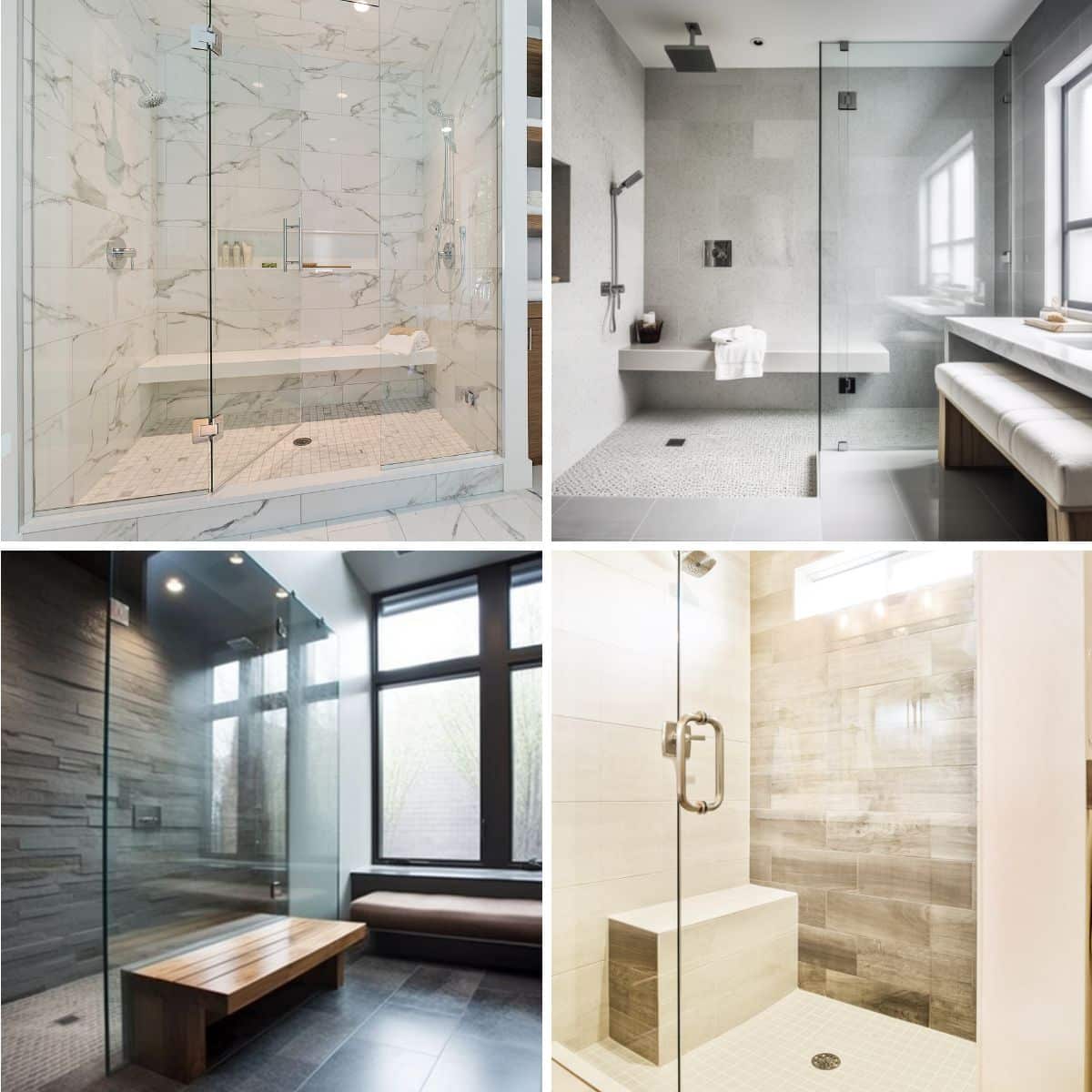
A shower bench can come in a variety of designs, such as a built-in bench, folding seat, or a portable teak stool to add more functionality to your bathroom space. Shower seats can provide a place to shave your legs comfortably, help keep toiletries within reach, or offer a place to sit and rejuvenate.

Having a shower with a built-in bench has become quite trendy these days. Unlike most trends, these benches have more functional benefits than aesthetics. Adding a seat increases safety in your bathing area. This is especially beneficial to people with disabilities and the elderly, as it decreases the chances of them accidentally slipping in the shower.
If that is not particularly a concern, a bench also helps ensure you get a more thorough shower session. Hard-to-reach areas such as your legs and your feet will be easier to wash properly if you have something to sit on. Not to mention, it also decreases the chance of you slipping in the shower. [toc]
If you want to install or add a shower bench, consider these factors:
By considering the above factors, you will be guided on your decision for appropriate shower bench sizing. If none of the users have any mobility issues and are all adults, a standard sitting height of 15″ to 19″ will work well, depending on the average height of its users.
It is best to try it yourself to see which is more comfortable. However, if you have kids / small children, try to keep it low enough for them to safely go down.
Generally, a seat height of 18″ would be comfortable for most, according to ADA standards. For the seat depth, it is also best to keep it between the ADA standard bench depth, between 18″ and 24″. Again, consider the body size and stature of the users when determining the depth of the bench.
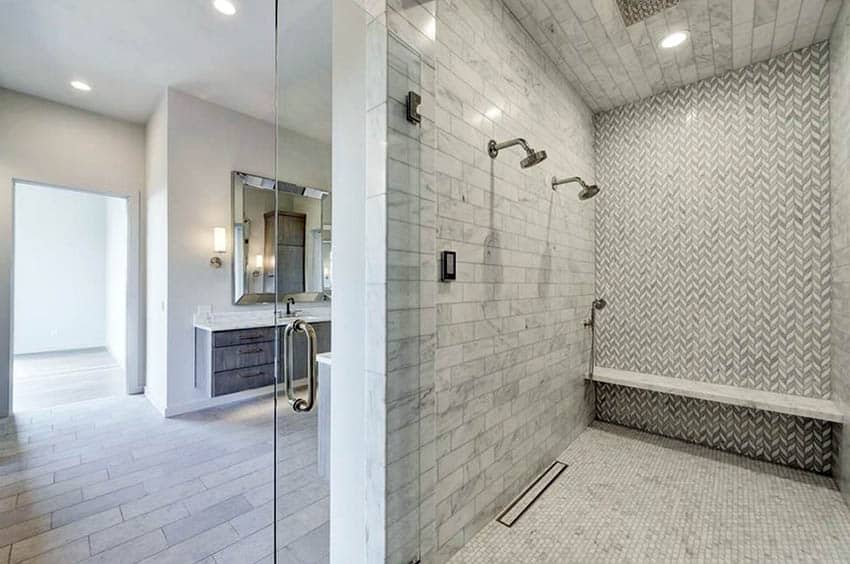
Depending on the size of your shower, there are many different seat styles to choose from.
Tiled Shower Bench – The easiest and the most common. This is easy to construct with concrete, especially if you haven’t tiled your shower area yet. This is also the choice of those who want to keep their benches “incognito.”
Marble/Stone Shower Bench – Similar to the tiled bench, the only difference is the material used.
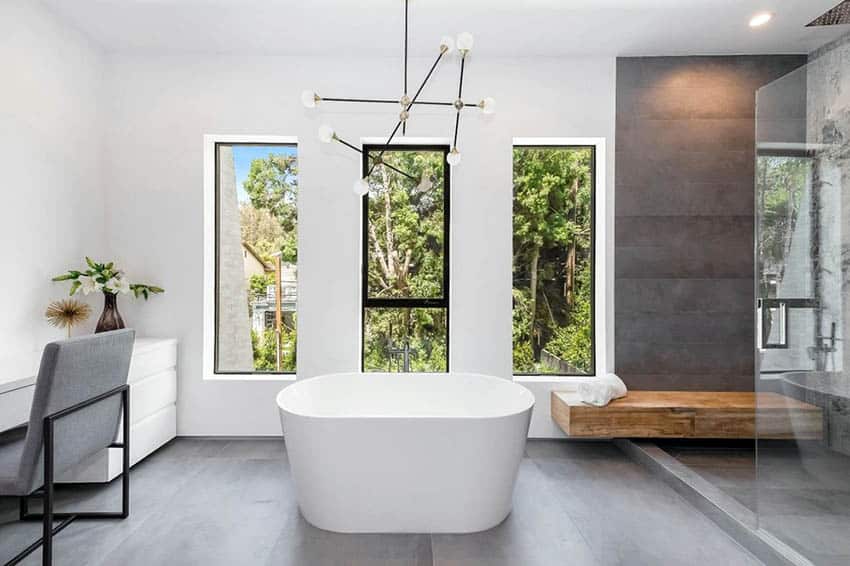
Floating Shower Bench – A faux “cantilever” is made using concrete and then clad with tiles or natural stones to create a floating effect. This is best if you want your bench to look sleek and light.
Wall-mounted Shower Bench – If you already have tiles installed, then perhaps a store-bought or custom wall-mount bench would work better. If you are a bit short on space, this would also work well, as you can purchase a folding bench.
Freestanding Shower Bench – This category includes wooden and plastic chairs and benches you can put in your bathing area, and specialized showering chairs for PWDs.
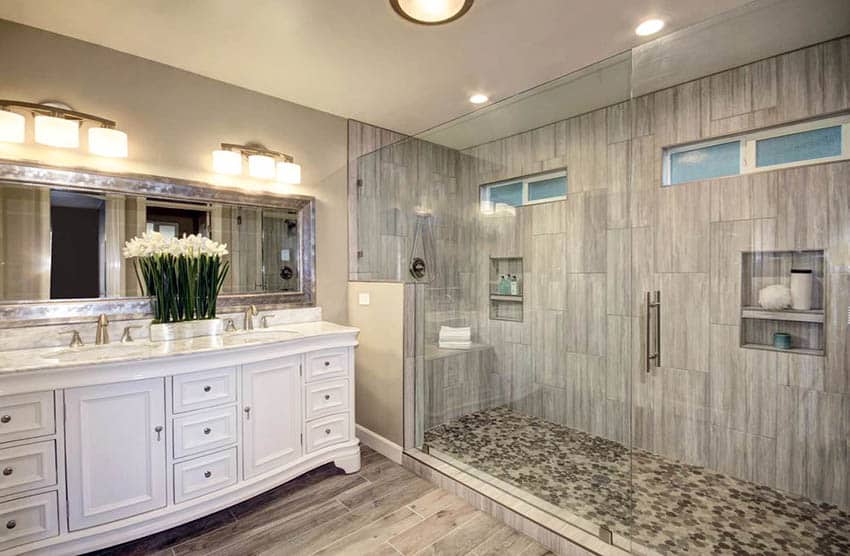
This tiled bench is placed where the showerhead wall is, which is an unusual location for seating but also makes sense, considering the length of the stall. The tiles used on the seat design match the walls, making it look clean and seamless.
There are many benefits of built-in shower benches made from tile, such as being durable, low cost, low maintenance and stylish.
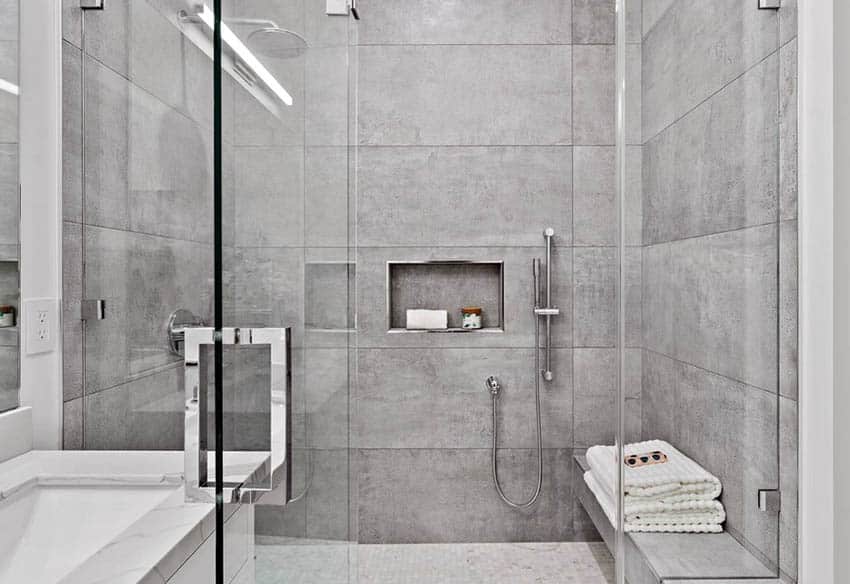
This wet room is a bit more proportionate in size. The almost square layout allows enough room for the tiled cantilever bench on one side. Because it’s a bit away from the main showerhead, a lower telephone wand sprayer was installed beside the ledge seat for ease of access.
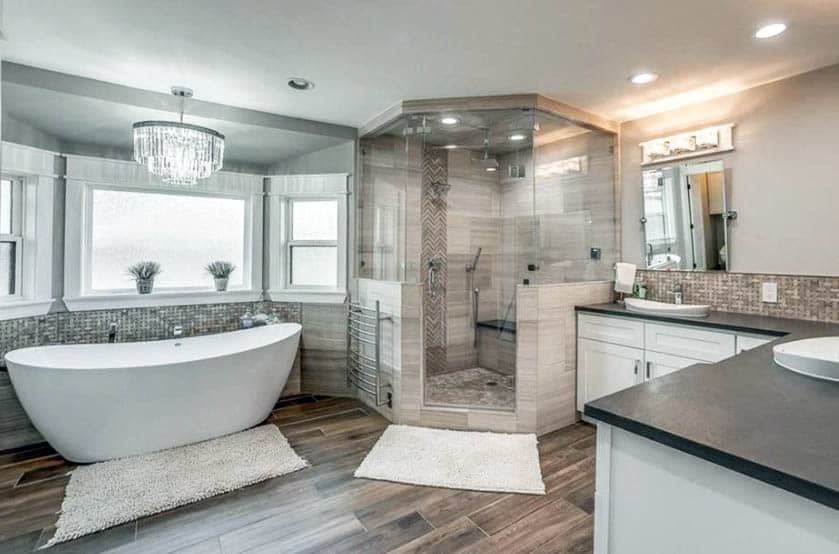
To match the glamorous look of the bathroom, the bench used in the small corner shower room is not only clad with tiles that match the walls but it is topped with black granite to match the vanity counter. This creates a very cohesive look for the space overall.
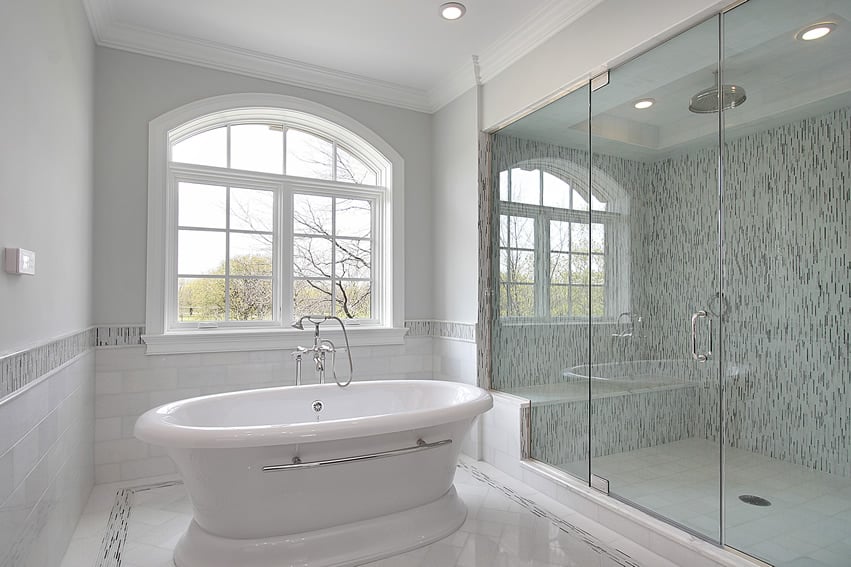
This is another example of a tiled bench with a stone top. This shower is large and spacious, so the seating area is also very deep, allowing enough room for larger body statures.
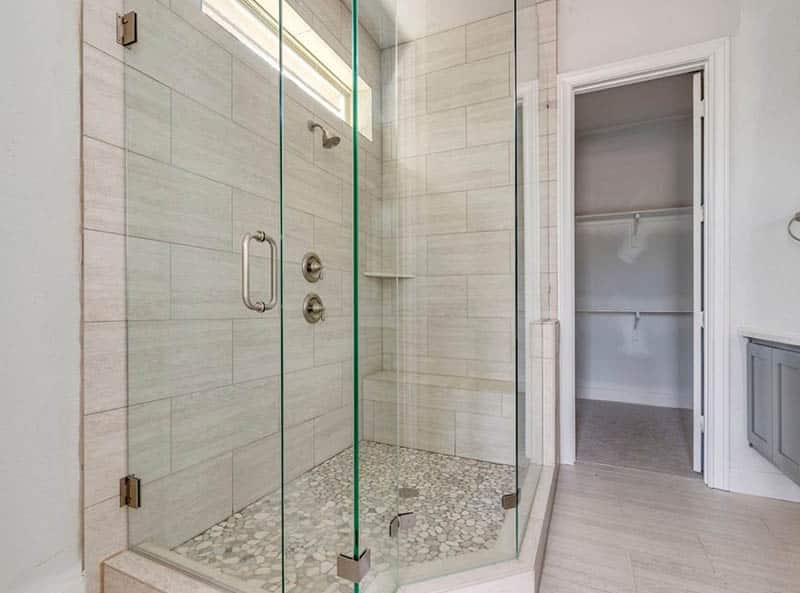
Since this shower is on the smaller side, the bench was tiled to camouflage as a ledge on the wall. Using tile for your sitting ledge can create an appealing, seamless effect that doesn’t draw attention to the bench itself.
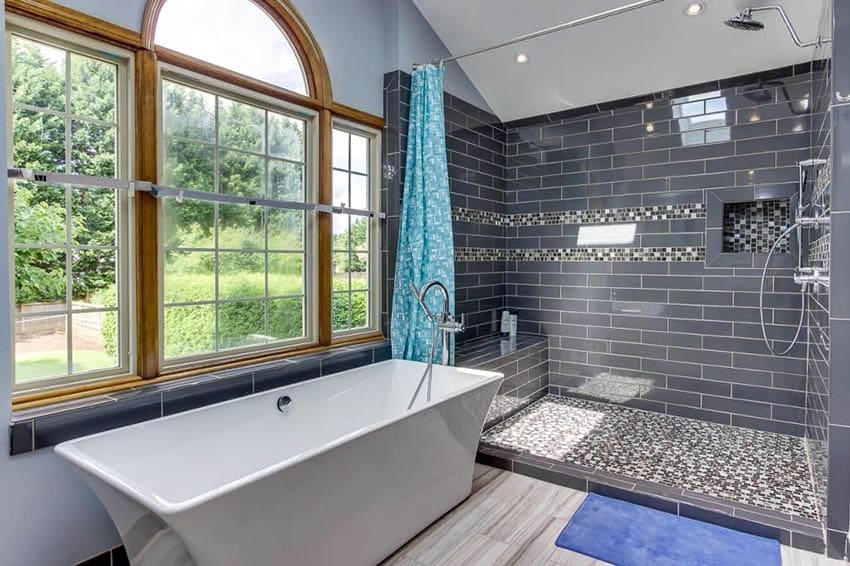
This tiled bench uses dark ceramic tiles instead of the usual light-colored tiles, giving it a unique, contemporary appeal.
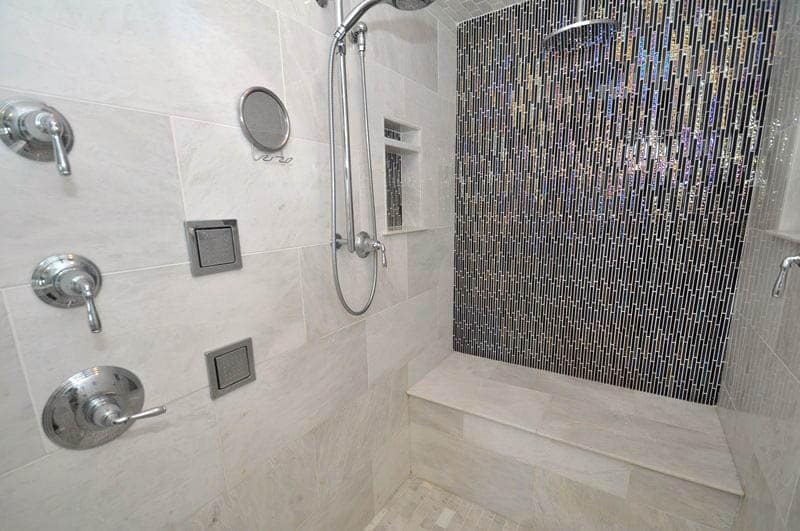
Instead of a fully matching combination of tiles, this walk-in shower room adds a wall with accent mosaic tiles to create a focal point in the small space – which is the wall where the bench is built against. The seat has its own ceiling-mounted rain showerhead, making it convenient to wash up, even when sitting.
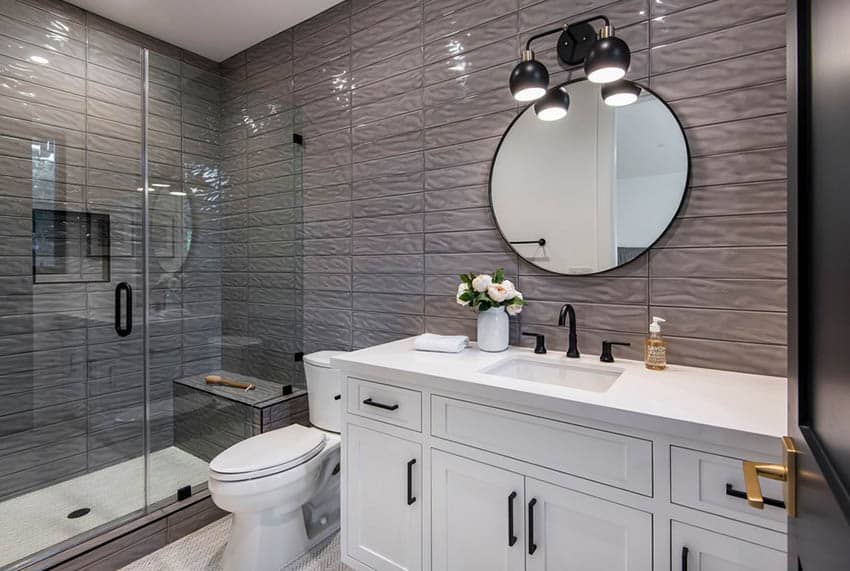
The walls of this bathroom use gray textured tiles all throughout – even the small seating ledge is clad with the same tiles. However, because of the light-colored floor tiles, the bold contrast between the two colors makes each other stand out.
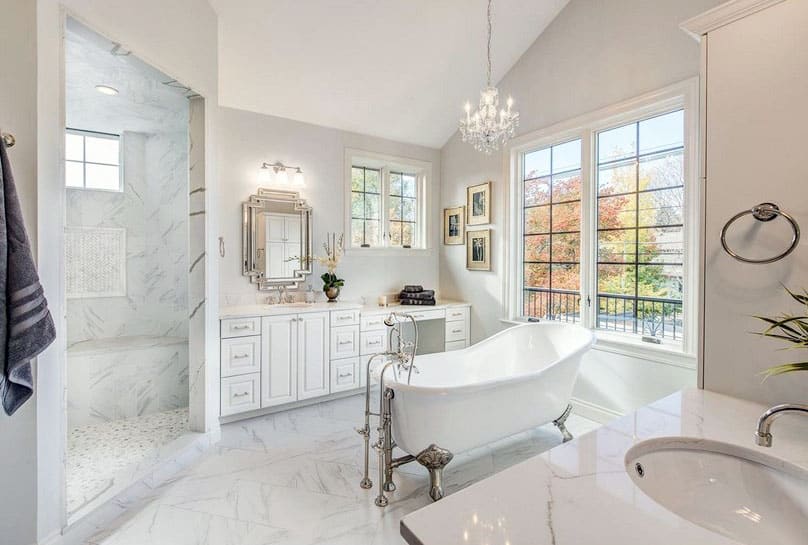
This marble-topped bench seamlessly blends onto the wall of this corner shower room, as it uses the same marble tiles as the walls. This creates a clean and seamless look in this elegant bathroom.

Similar to the previous example, this marble shower design uses the same marble tiles for seating and walls. But instead of a full concrete slab, it goes off a slimmer, cantilever look that makes the small stall still feel spacious despite its size.
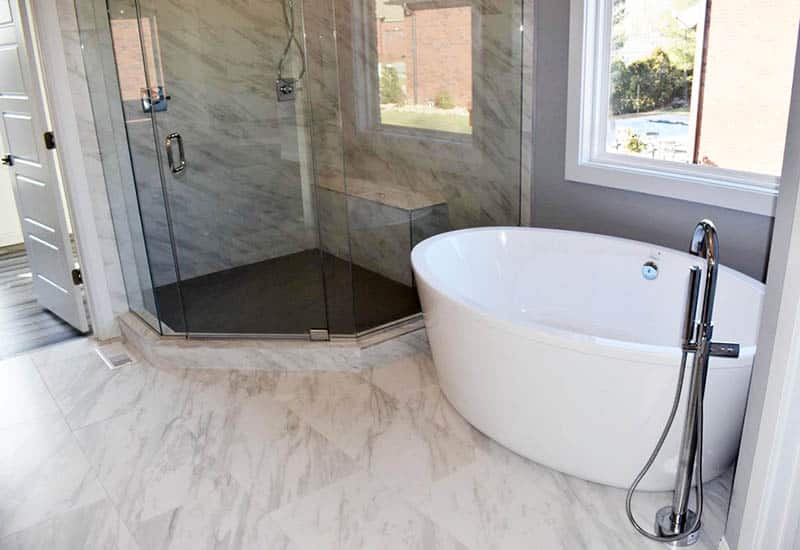
The marble tiles used for this corner built-in ledge really stand out because of the dark black granite tiles used on its floor. Bench ideas that can utilize a window room are especially beneficial for a serene spa-like feel if you have the privacy to accommodate its design.
For those who are a bit short on space in the shower areas or those who simply don’t want the bench to occupy too much space, corner designs are a good option. See some examples below:
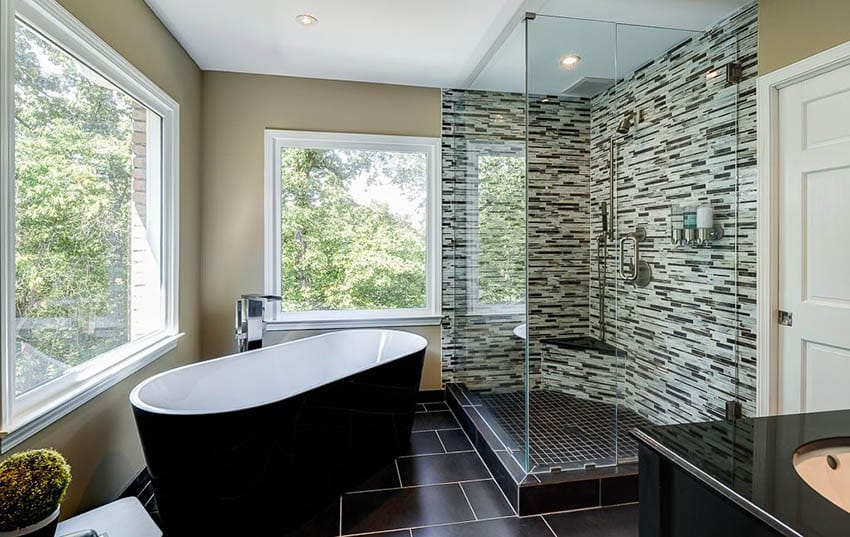
With matching mosaic tiles and a black granite top, this corner seat stays low-key while providing you with a convenient, small sit-down area while showering. The small corner triangle design can also double as a storage shelf.
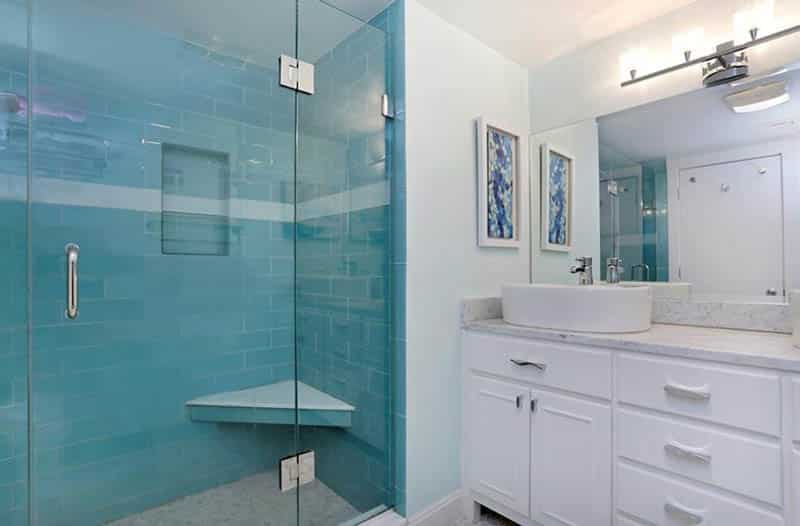
Bold turquoise wall tiles are used on the walls and this small enclosure’s cantilever corner sitting ledge. A white solid surface was also used on top of it for a smoother finish.
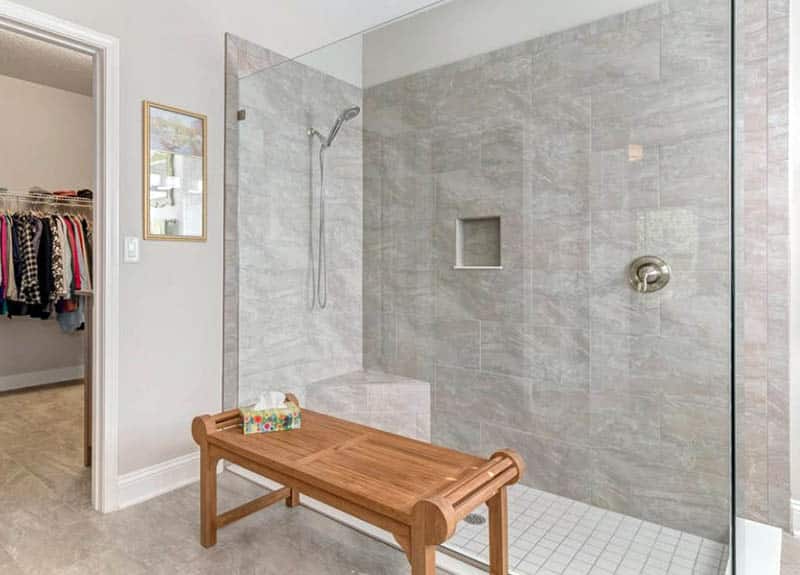
To keep a clean and seamless contemporary look, this shower room blends in its corner built-in seat with the wall tiles by using the same material and very narrow grouting. A showerhead positioned next to the seat is helpful for those who want to sit and shave while bathing.
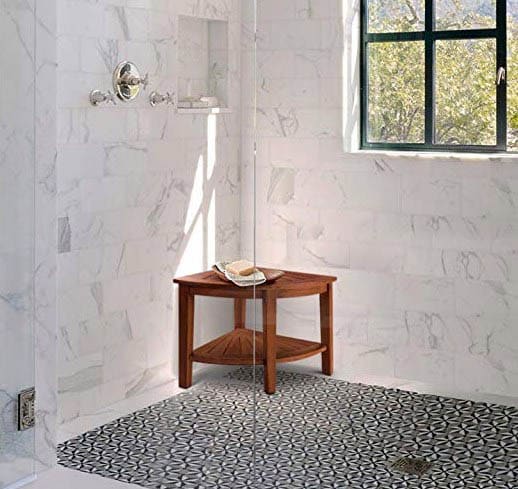
See this teak wood corner stool at Amazon
If you’re short on space and don’t want to construct or re-tile, a freestanding wooden seat would be the best choice. Not only is it more affordable, but they’re also lightweight and movable, so you can easily remove them if you don’t need them.
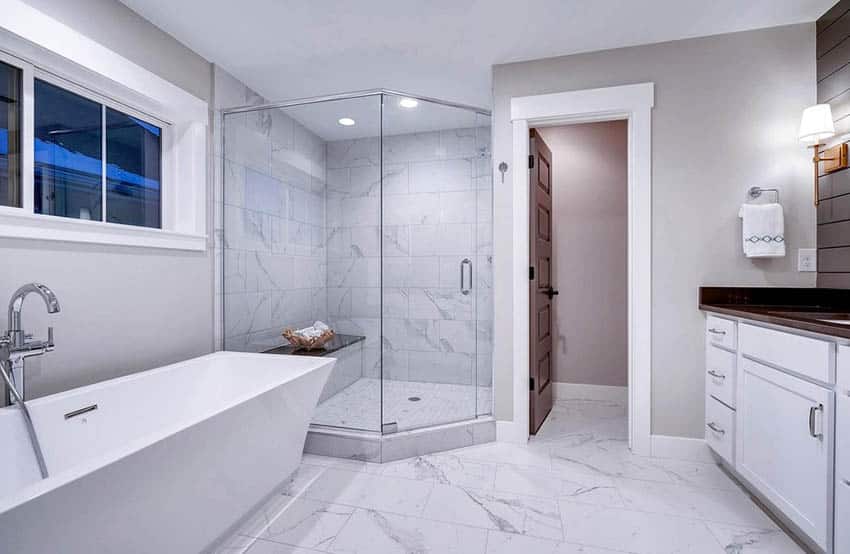
The use of a black granite surface not only adds a nice contrast to the finishes but also makes it the focal point of the space.
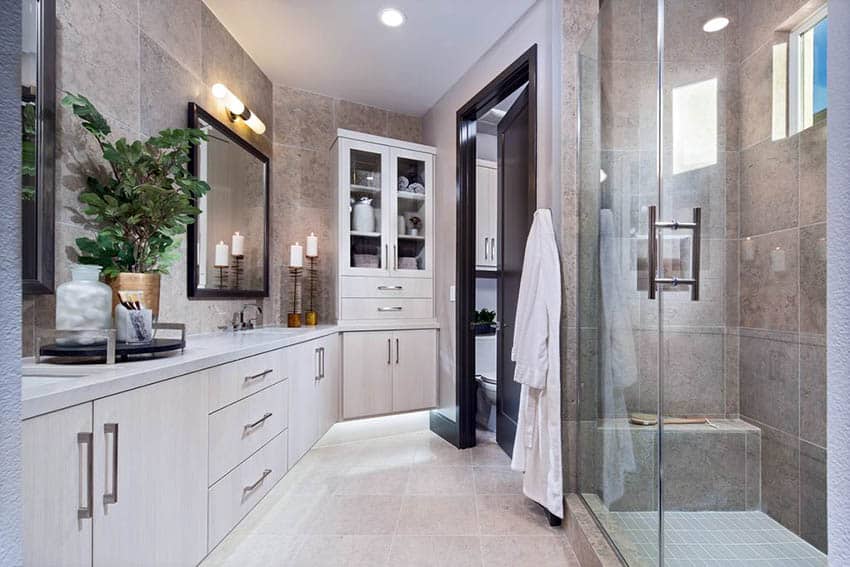
Since the tiles used for the walls and floor of this shower area are textured, a granite top was added for a smoother, more comfortable surface.

Mosaic tiles and any small-sized tiles are usually not ideal to use on seats because the texture can be uncomfortable, and the grouting is a nightmare to clean.
If your existing wall tiles are smaller, you can simply add a granite top on the ledge. Not only will it make it more comfortable, but it will also look more elegant and is easier to clean.
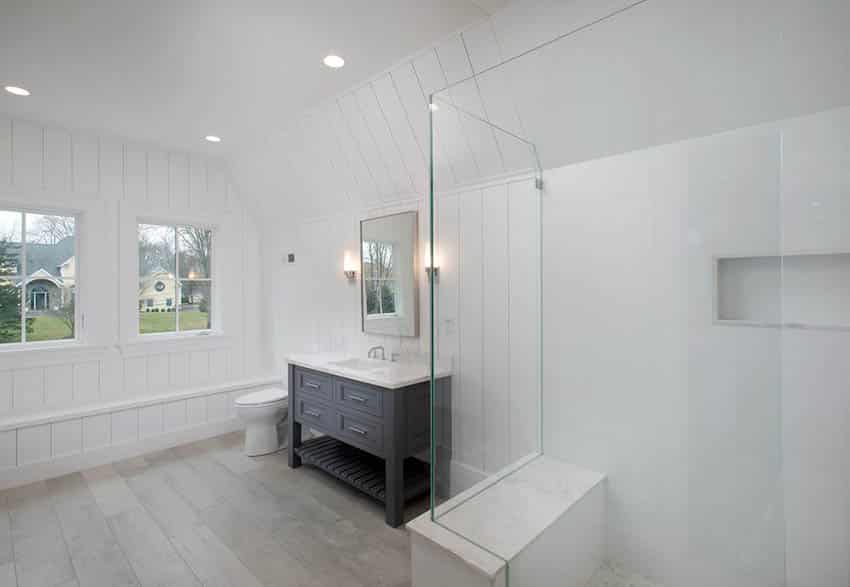
This pony wall, topped with white quartz, functions not only as a seat but also as a base support for the glass partitions of the enclosure.
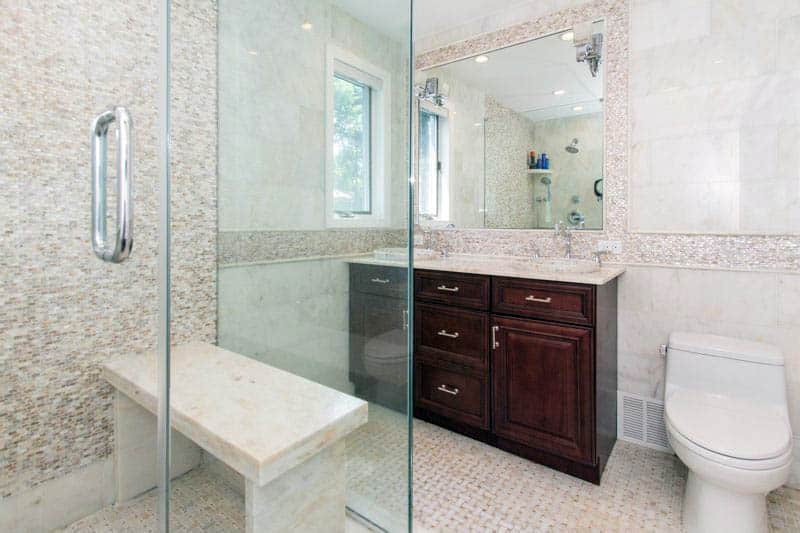
Already have tiles and partitions installed? No problem. You can still easily install a solid quartz slab seat like this example. Only one side of the design is flushed and attached to the wall, while quartz legs on both ends help support the whole structure.
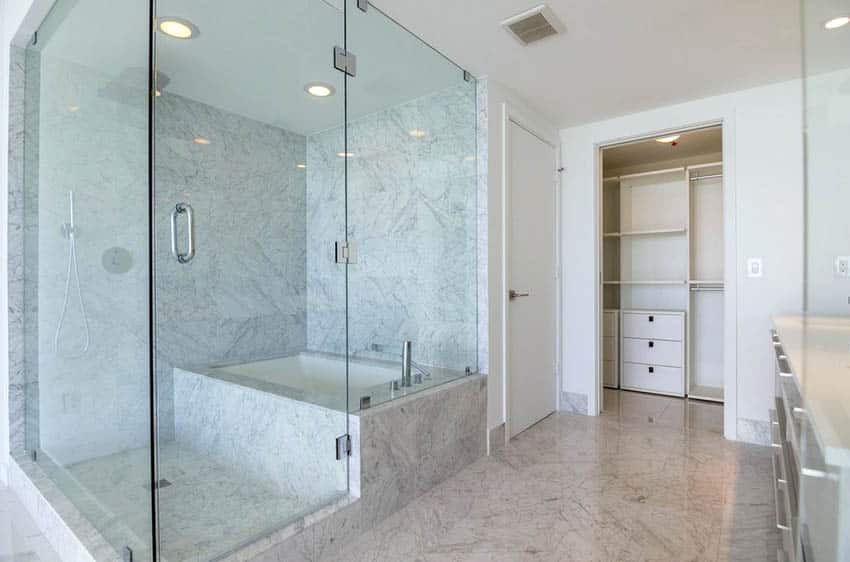
If you have a combined bathtub and shower area, you can maintain a clean and modern look by using an inset, built-in bathtub. Clad the area around the tub with quartz or any material of your choice, and it can also double function as seating if it is right beside the bathing area, like in this example.
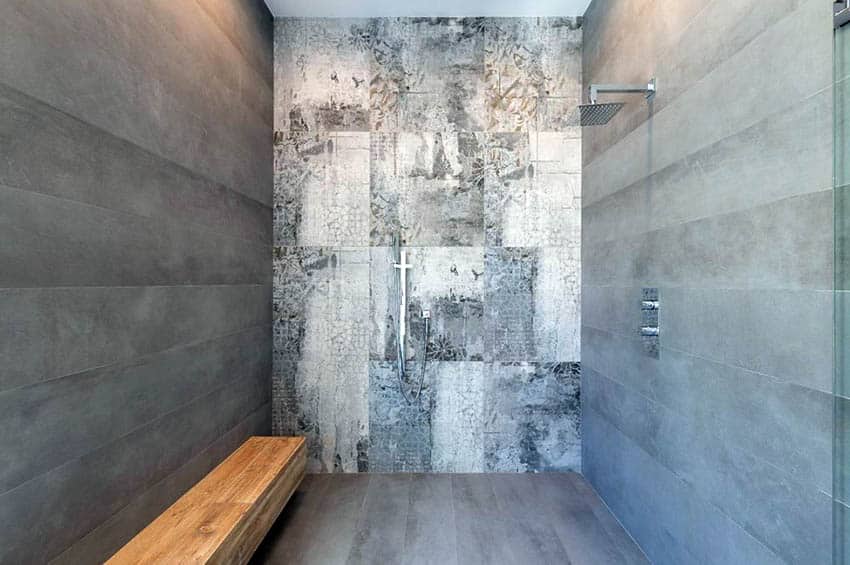
This gorgeous industrial-style shower area has a rustic charm, thanks to wood tiles on its cantilever seating design.
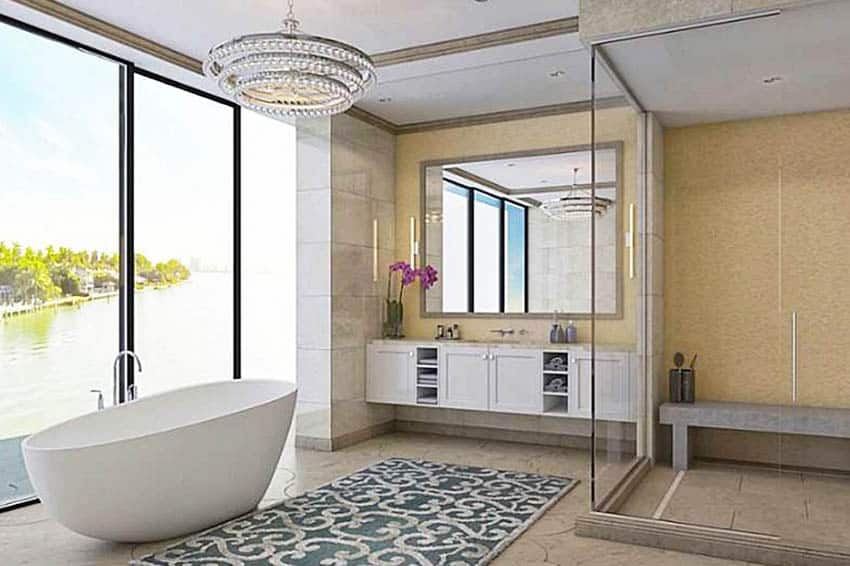
For transitional bathroom style, it’s a little easier to integrate the bench into the design. In this case, a freestanding seat made of solid stone was placed in the enclosure. The large stone design is sturdy, and because of its weight, you’ll be assured that it will stay in place inside the shower.
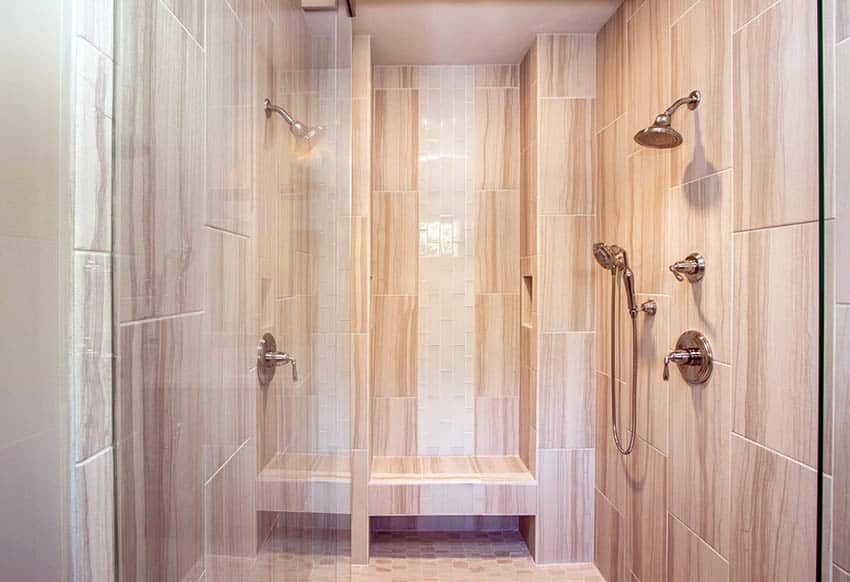
A multi-function luxury walk-in shower seat like this example really makes the area the focal point of the shower by adding glass accent tiles in the middle. The added recessed shelves also have a nice touch to the design.
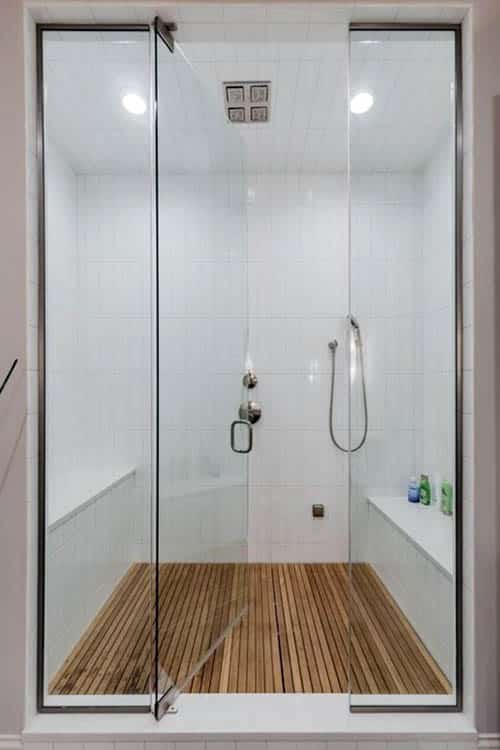
The contrast of the wood deck flooring with the sparkling white tiles creates a simple yet stunning look for this walk-in shower.
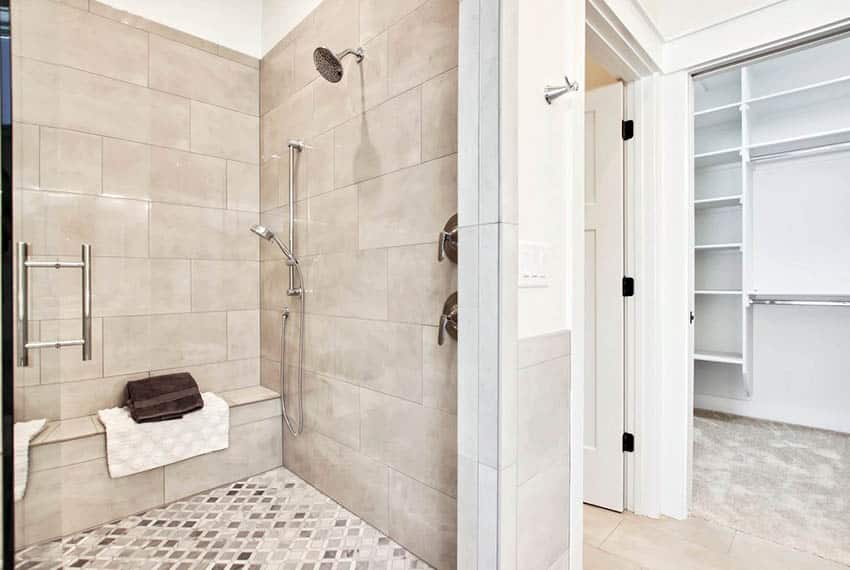
A fully enclosed walk-in shower with a built-in tiled seat. This small showering space has a classic, elegant appeal with two types of sprayers.
Floating or cantilever benches are great for smaller and tighter spaces as they look less bulky. Here are some excellent examples:

Since the bathroom shower design is narrow, installing a floating seat attached to the wall on only two sides is possible. The narrow width ensures it is sturdy enough to hold weight and to compensate for this, more depth is added to this ledge.
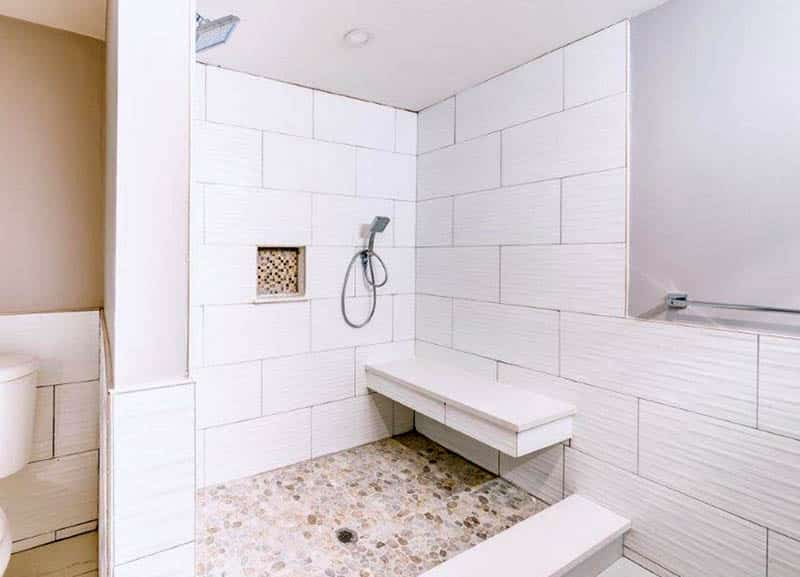
A telephone showerhead was conveniently installed right beside the floating shower bench with a quartz top. These types of applications make showers easier for people with limited movement (PWDs, elderly, etc). This also is a great spot for quick cleaning, such as cleaning dirt off your feet or legs.
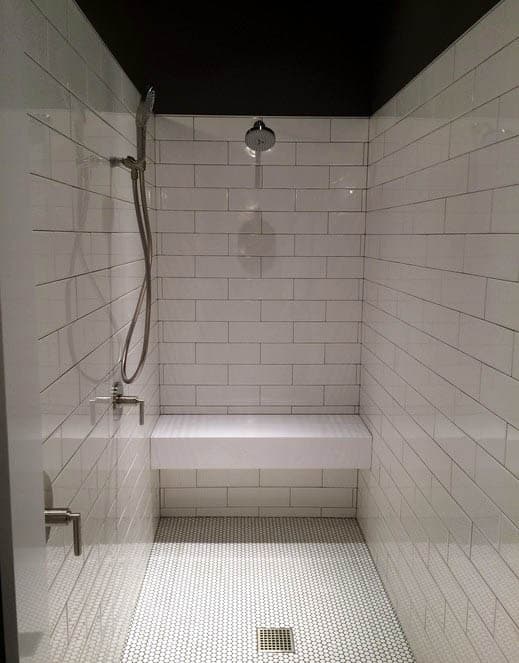
Seamlessly blending into the walls, this floating bench functions as a seat and a small ledge for your toiletries.
Since the seat ledge was placed under the shower head, the area is kept relatively dry most of the time, and because this small enclosure has no space for a wall-hung towel rack, you can also place your towels and clothes on the ledge to keep them dry.
Modern bathrooms usually have a clean, sleek look, with streamlined silhouettes combined with stainless steel elements. If you think benches look “old school,” below are some examples of integrating benches into modern bathroom designs:
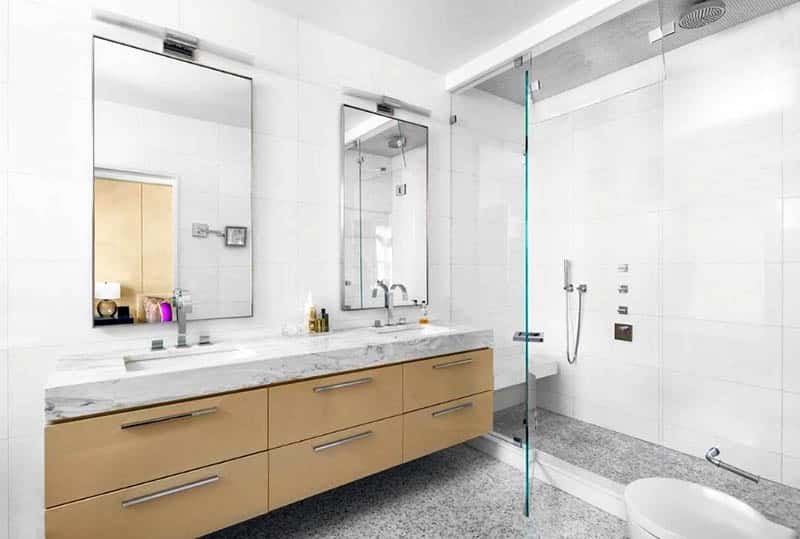
Simplicity is the key to this modern bathroom. It features white ceramic tiles all over the walls and gray terrazzo floors for added texture and pattern.
A floating bench was installed in the bathroom’s enclosure and was clad in the same tiles used on the wall, making it look well-camouflaged.
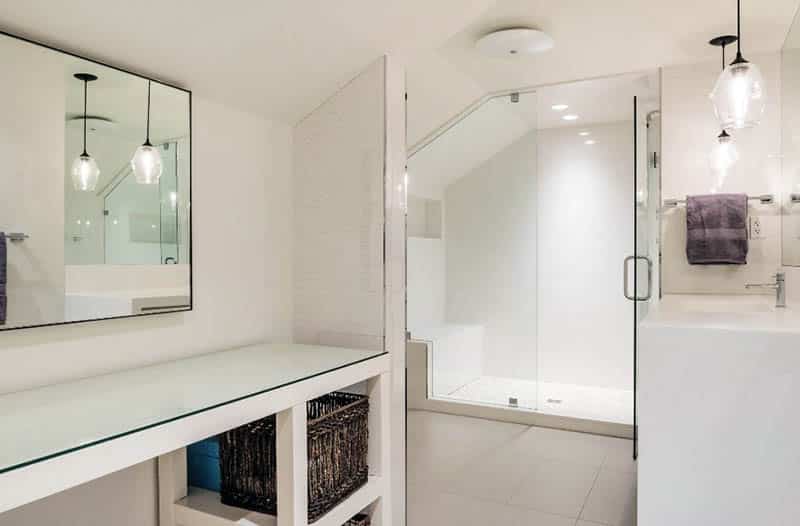
Sometimes, the best way to hide is in plain sight – and this modern all-white bathroom demonstrates how to do it right. Following the unique shape of the walls, the shower bench blends in as if it were actually part of the architectural detail of the showering area. A large glass shower door meets with a glass partition to complete this streamlined design.

Built into the low partition of the shower, this quartz-topped seat becomes the focal point of the bathing area.
Some of the best shower bench ideas are versatile, such as a wall-mounted design that folds up when not in use.
The smallest walk-in shower designs start at 30″ by 30″. The International Residential Code (ICCsafe source) mandates that showers are at least 900 square inches or 30″ by 30″ to safely add a built-in seat.
A folding model may work for your space if you have a stall that is this size or larger but not large enough to comfortably accommodate a regular-sized bench.
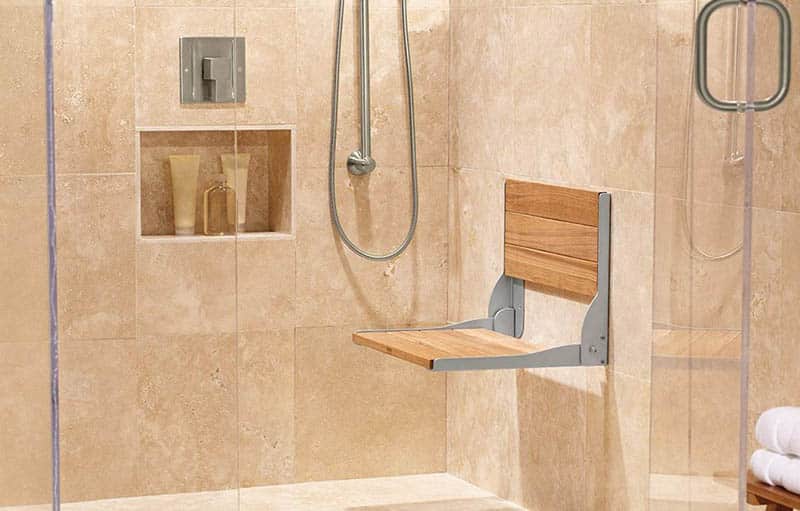 Wall mounted foldable seat" width="800" height="511" />
Wall mounted foldable seat" width="800" height="511" />
See this teak wood folding seat at Amazon
An even more space-saving option would be wall-mounted shower benches. These can be bought in stores or online and can easily be installed in existing enclosures, as long as there is a wall to attach to. These low-profile benches can be folded, so you can easily stow them away when not in use.
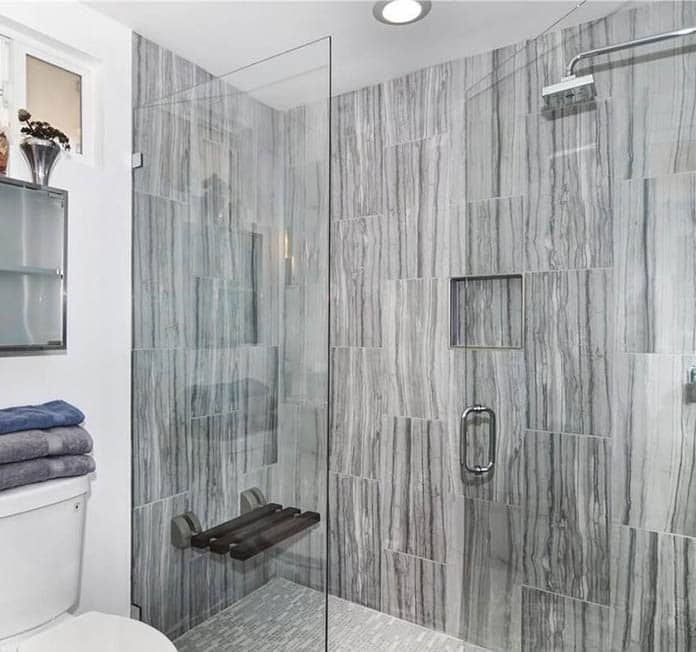
Attached to the wall, this folding bench is a combination of stainless steel metal framing and teak wood. This can be folded so it doesn’t occupy space when not used.
Portable benches are those which you can basically move around easily. You can put them in and remove them as quickly as you want. They are usually made from various kinds of wood (Teak being the most popular), as well as bamboo, plastics, metal, or a combination.
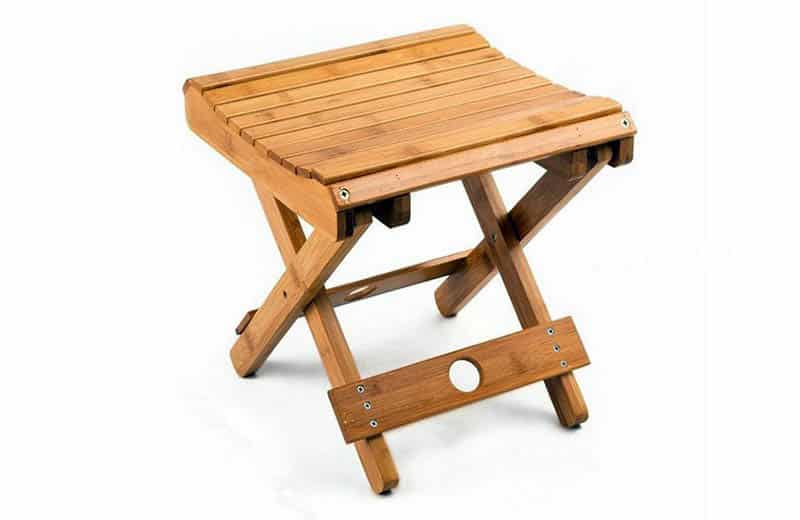
See this bamboo folding seat at Amazon
Bamboo is a new popular material used in outdoor furniture. This folding stool is made from bamboo ply, which are basically flattened sheets of bamboo. Bamboo is also known for its excellent weather resistance, so getting it wet is not an issue.
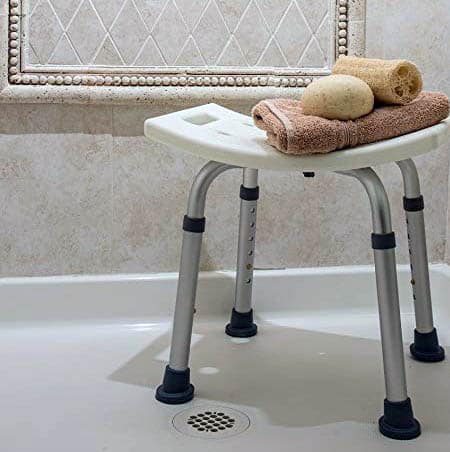
See this medical shower stool at Amazon
A medical shower chair is helpful for the elderly those with injuries or limited mobility. The four-legged design provides a stable platform for sitting and personal grooming in the bathtub or enclsoure. The aluminum frame helps prevent corrosion, and a curved seat helps offer additional comfort.
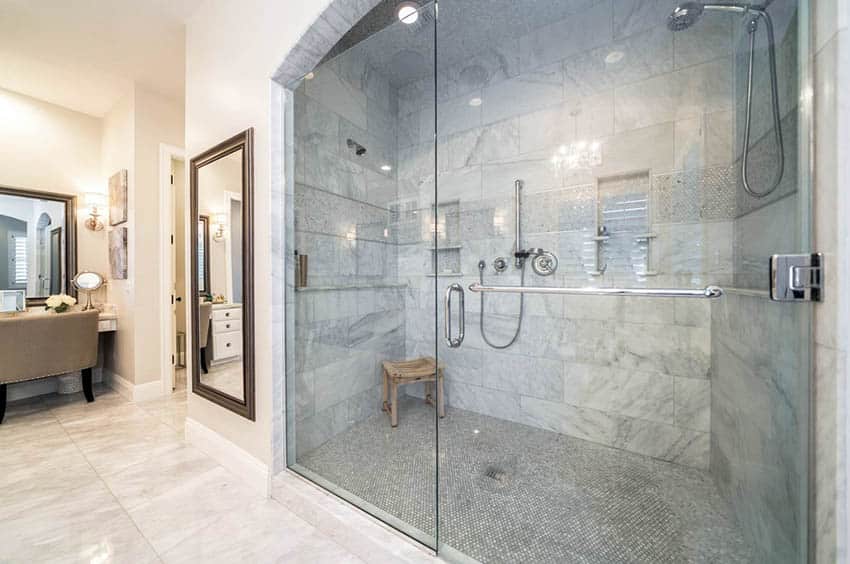
Perhaps the most traditional type is a wooden stool, which was used back in the day as well. They are light, affordable, and easily move around as needed. Just make sure the legs have the appropriate grippers so it doesn’t slip on the floor!
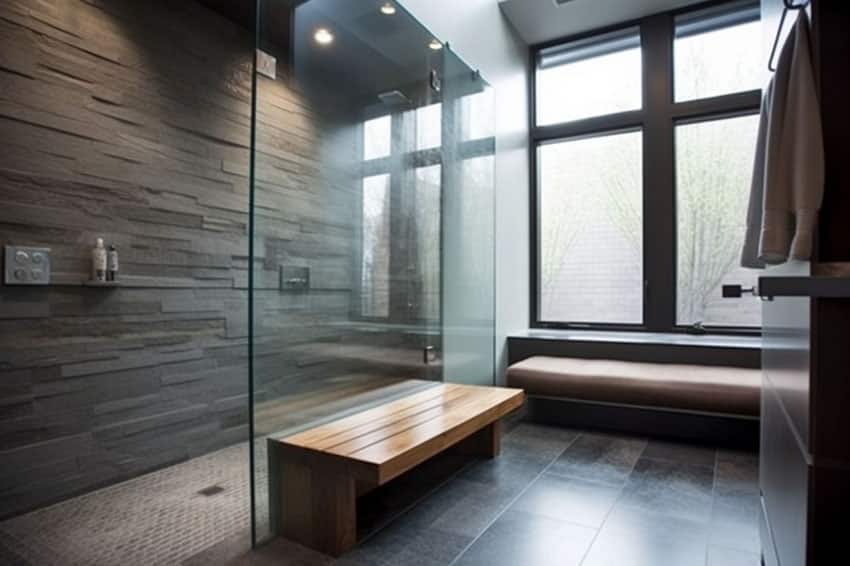
Many opt to use seating outside the enclosure to prevent moisture from damaging the wood surfaces. They can help those with children or limited mobility to sit while undressing or dressing. They can also help keep your clean towels or clothing off the floor.
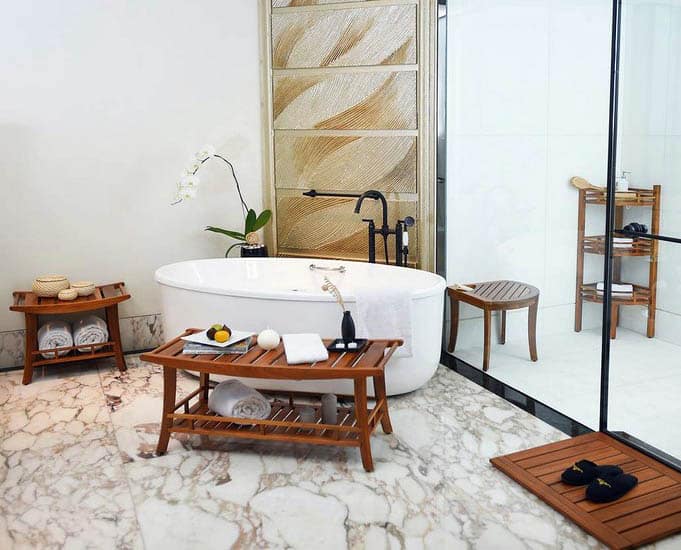
See this wood bathroom seat at Amazon
Teak is a popular material for outdoor furniture and decking because of its excellent weather resistance. Teak has a natural oil that helps repel water, warping, or cracking.
Teakwood is quite hard, shrinks very little in seasoning, and possesses great physical strength. – Sculpture in Wood, Jack C. Rich
This example shows various variations of solid teak benches – a teak stool, a tub seat, and a corner stool as well. A teak stool is perfect if you have a small space but need that “sit down” area in your enclosure.
What are your favorite shower bench ideas? Let us know what your favorites are or any questions we missed in the comments below.